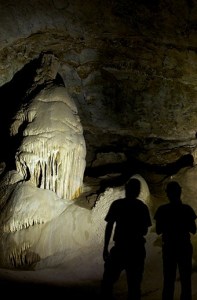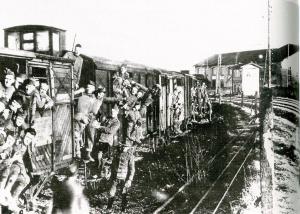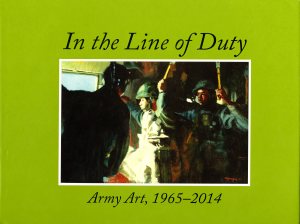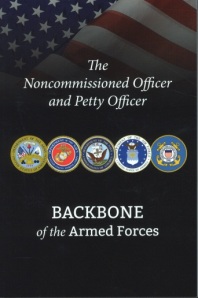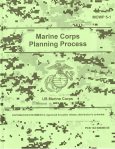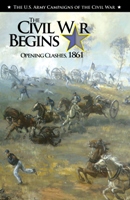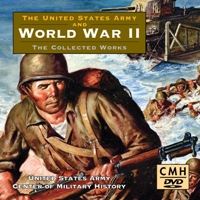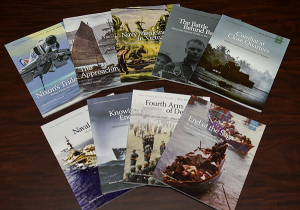 The lavishly illustrated historical series includes both ePub and MOBI formats for each volume of the educational and narrative volumes about the U.S. Navy’s varied operations during the Vietnam War.
The lavishly illustrated historical series includes both ePub and MOBI formats for each volume of the educational and narrative volumes about the U.S. Navy’s varied operations during the Vietnam War.
I was not yet born at the beginning of U.S. involvement in the Vietnam War and was a young girl when the war ended. Therefore, reading these early volumes detailing the United States’ intervention in the Indochina conflict and the U.S. Navy’s many-faceted role, ranging from humanitarian aid missions over riverine warfare to carrier-launched air strikes, was enlightening to me.
Although I’ve spent much of my life reading in print format, I’ve embraced the birth of digital formats that allow for an easy, lightweight alternative for reading an extensive historical series such as this one.
This series comprises nine distinct volumes, each portraying a different aspect of the U.S. Navy’s missions during Vietnam War and bridging five Presidential administrations – those of Dwight D. Eisenhower, John F. Kennedy, Lyndon B. Johnson, Richard M. Nixon, and Gerald Ford. The volumes of this series that appeared most interesting to me are those that touch upon the extensive use of high-altitude reconnaissance photography for intelligence purposes. (Today’s equivalents are most likely the employment of unmanned aerial vehicles or drones.)
 However, each volume of this series serves its purpose: to detail the multifaceted operational role of the U.S. Navy in Vietnam. Approaching Storm details the waning years of French colonial governance and “Passage to Freedom,” the U.S. Navy’s 1954 humanitarian evacuation operation and the service’s first large-scale, in-theater deployment. Other volumes cover the many types of naval operations ranging from carrier air strikes offshore in the South China Sea over combat in South Vietnam’s canals and rivers to special warfare missions with the goals of collecting intelligence and neutralizing Communist command and control. The Battle Behind Bars shares the wrenching stories of many Navy and Marine POWs (prisoners of war), most of them downed naval aviators, in North Vietnamese captivity. Navy Medicine in Vietnam also speaks to me, as it highlights a Navy nurse’s reflections on the only land-based naval hospital in Vietnam. My mother served as registered nurse and head nurse at the West Haven, Connecticut, Veterans Medical Center and received patients for recovery after the Korean and Vietnam wars. Her stories, ranging from triage care performed by front-line medical teams to Stateside recovery care, were similar to the one featured in this volume.
However, each volume of this series serves its purpose: to detail the multifaceted operational role of the U.S. Navy in Vietnam. Approaching Storm details the waning years of French colonial governance and “Passage to Freedom,” the U.S. Navy’s 1954 humanitarian evacuation operation and the service’s first large-scale, in-theater deployment. Other volumes cover the many types of naval operations ranging from carrier air strikes offshore in the South China Sea over combat in South Vietnam’s canals and rivers to special warfare missions with the goals of collecting intelligence and neutralizing Communist command and control. The Battle Behind Bars shares the wrenching stories of many Navy and Marine POWs (prisoners of war), most of them downed naval aviators, in North Vietnamese captivity. Navy Medicine in Vietnam also speaks to me, as it highlights a Navy nurse’s reflections on the only land-based naval hospital in Vietnam. My mother served as registered nurse and head nurse at the West Haven, Connecticut, Veterans Medical Center and received patients for recovery after the Korean and Vietnam wars. Her stories, ranging from triage care performed by front-line medical teams to Stateside recovery care, were similar to the one featured in this volume.
Grab your tablet or e-reader, and download these digital format references about the Navy’s role in the Vietnam War, free of charge! I’ve provided a synopsis for each volume so you can read the volumes that most interest you to the entire series. Happy reading!
Approaching Storm: Conflict in Asia, 1945–1965
This work is the first in NHHC’s Vietnam War series. It describes the U.S. response to Communist movements in Asia after World War II, the initial American support for French colonial forces in the region, and the U.S. Navy’s role as it evolved from an essentially advisory one to actual combat after the Tonkin Gulf attack off North Vietnam in August 1964. The real and purported North Vietnamese attacks on the U.S. Navy ships in the Tonkin Gulf gave President Lyndon B. Johnson sufficient reason to broaden and expand U.S. involvement in the conflict. The volume covers many lesser-known, yet significant, aspects of the initial years of the Vietnam War and the U.S. Navy’s early humanitarian, advisory, and combat operations in southeast Asian waters.
Nixon’s Trident: Naval Power in Southeast Asia, 1968–1972
This volume focuses on the three prongs of the naval “trident” that President Richard M. Nixon wielded during the final years of the Vietnam War: naval air power, naval bombardment, and mine warfare. For much of this period, Navy aircraft sought to hamper the flow of supplies down the Ho Chi Minh Trail in Laos—a huge investment in air power resources that ultimately proved fruitless. After North Vietnam’s invasion of the South in 1972, however, Navy tactical aviation, as well as naval bombardment, proved critical not only in blunting the offensive, but also in persuading North Vietnam to arrive at a peace agreement in Paris in 1973. For the first time in the war, the Navy was also authorized to close Haiphong Harbor and North Vietnam’s other ports with naval mines—an operation that still stands out as a textbook example of how mine warfare can inflict a major economic and psychological blow on the enemy with minimal casualties for either side. Thus, naval power was indispensable to ending America’s longest war.
The Battle Behind Bars: Navy and Marine POWs in the Vietnam War
The unconventional nature of the war and the unforgiving environment of Southeast Asia inflicted special hardships on the Vietnam-era POWs, whether they spent captivity in the jungles of the South, or the jails of the North. This book describes the experiences of the 201 captured sea services personnel (157 Navy, 47 Marines)—the similarities and the differences—and how the POWs coped with untreated wounds and other malaises, systematic torture, and boredom. The creative strategies they devised to stay fit, track time, resist the enemy, communicate with one another, and adhere to a chain of command attest to the high standards of conduct in captivity that so distinguish the POWs of the Vietnam War. Personal stories ranging from that of Seaman Apprentice Douglas B. Hegdahl, the youngest POW, to that of then-Commander James Stockdale, the senior U.S. Navy officer held in captivity, are featured.
Navy Medicine in Vietnam: Passage to Freedom to the Fall of Saigon
Navy Medicine in Vietnam begins and ends with a humanitarian operation—the first, in 1954, after the French were defeated, when refugees fled to South Vietnam to escape from the communist regime in the North; and the second, in 1975, after the fall of Saigon and the final stage of America’s exit that entailed a massive helicopter evacuation of American staff and selected Vietnamese and their families from South Vietnam. In both cases, the Navy provided medical support to avert the spread of disease and tend to basic medical needs. Between those dates, 1954 and 1975, Navy medical personnel responded to the buildup and intensifying combat operations by taking a multipronged approach in treating casualties. Helicopter medical evacuations, triaging, offshore deployment of hospital ships, and a system of moving casualties from short-term to long-term care meant higher rates of survival and targeted care. Poignant recollections of the medical personnel serving in Vietnam, recorded by author Jan Herman, historian of the Navy Medical Department, are a reminder of the great sacrifices these men and women made for their country and their patients.
Combat at Close Quarters: Warfare on the Rivers and Canals of Vietnam
Combat at Close Quarters describes riverine combat during the Vietnam War, emphasizing the operations of the U.S. Navy’s River Patrol Force, the joint U.S. Army–Navy Mobile Riverine Force, and the Vietnam Navy. One section details the SEALORDS combined campaign, a determined effort by the U.S. Navy, Vietnam Navy, and allied ground forces to cut enemy supply lines from Cambodia and disrupt operations at base areas deep in the delta. Also provided are many details of the combat vessels, helicopters, weapons, and equipment employed in the Mekong Delta, as well as the Vietnamese combatants on both sides and American troops who fought to secure Vietnam’s many rivers and canals. The American experience on Vietnam’s waterways is indispensable to understanding the impact of riverine warfare on modern U.S. naval and military operations in the 21st century.
Naval Air War: Rolling Thunder Campaign
Naval Air War: The Rolling Thunder Campaign, the sixth monograph in the series, covers aircraft carrier operations during one of the longest sustained aerial bombing campaigns in history, intended to force North Vietnam into peace negotiations. Despite causing extensive damage to North Vietnam’s infrastructure and its war-making capability, the campaign fell short of its ultimate goal. However, aircraft from U.S. Navy carrier air wings proved essential to the conduct of Rolling Thunder, not least due to the inherent flexibility and mobility of naval forces: U.S. Seventh Fleet aircraft carriers operated with impunity for three years off the coast of North Vietnam. The success with which the Navy executed the later Operation Linebacker campaign against North Vietnam in 1972 revealed how much the service had learned from and exploited the Rolling Thunder experience of 1965–1968.
Knowing the Enemy: Naval Intelligence in Southeast Asia
If you are intrigued by behind-the-scenes knowledge and secret missions, this volume may interest you. Knowing the Enemy details the U.S. Navy intelligence establishment’s support to the war effort in Southeast Asia from 1965 to 1975. It describes the contribution of naval intelligence to key strategic, operational, and tactical aspects of the war. This included the involvement of naval intelligence in the seminal Tonkin Gulf Crisis of 1964 and the Rolling Thunder and Linebacker bombing campaigns; the monitoring of Sino-Soviet bloc military assistance to Hanoi; the operation of the U.S. Seventh Fleet’s reconnaissance aircraft; the enemy’s use of the “neutral” Cambodian port of Sihanoukville; and the support to U.S. Navy riverine operations during the Tet Offensive and the SEALORDS campaign in South Vietnam.
Fourth Arm of Defense: Sealift and Maritime Logistics in the Vietnam War
Fourth Arm of Defense describes the roles of the U.S. Navy and the U.S. Merchant Marine in the logistical support of the conflict in Southeast Asia, essentially the lifeline of U.S. and allied combat forces. The monograph details the large-scale deployment of Army and allied troops to the theater of operations by the Navy’s Military Sea Transportation Service (later Military Sealift Command) and the development of essential modern port facilities and cargo-handling procedures in South Vietnam. Also detailed is the dangerous and sometimes deadly effort to deliver ammunition, fuel, and other supplies to Saigon and other ports far upriver. The overall command and control of the 5,000-mile logistics pipeline across the vast Pacific is covered, as is the employment of revolutionary cargo container and roll on/roll off ships. The narrative concludes with the maritime evacuations from South Vietnam and Cambodia in 1975. Always in focus are the service and sacrifice of U.S. Navy sailors and the men of the U.S. Merchant Marine and many other countries who braved tempestuous seas, and ports and rivers subject to enemy attack.
End of the Saga: The Maritime Evacuation of South Vietnam and Cambodia
As the decades-long struggle in Southeast Asia came to a climax in the spring of 1975, the U.S. Navy and Marine Corps saved thousands of U.S. citizens and pro-American Vietnamese and Cambodians from the victorious Communist forces. Also covered is the final operation of the decades-long conflict, the recapture of SS Mayaguez from Cambodian Communist forces and the assault on the Cambodian island of Koh Tang by a joint U.S. Navy, Marine Corps, and Air Force task force. Slightly older readers may recall how the precipitate withdrawal of the United States from Viet Nam and Cambodia presented the disconcerting spectacle of the abandonment of allies and, on a more human level, desertion of a host of individuals who had worked and fought for common aims. Yet behind the tragic elements of the picture, the final evacuations highlighted the skill and courage of American uniformed personnel in the midst of chaos. The U.S. military, especially the Navy and Marine Corps, demonstrated extraordinary professional skill in carrying out large-scale and complicated evacuations. Given the public’s skepticism of American service members at the tail end of the Vietnam War, this performance seems at first glance surprising. However, despite the woes afflicting the military in 1975—racial tensions, counterculture sentiment, drug abuse, a lower quality of recruits—these Americans in uniform showed that that the services retained a solid core of competent and dedicated people, many of whom were instrumental in restoring and advancing the armed forces’ capabilities and image during the 1980s.
The GPO Online Bookstore – Easy Access to Federal Publications
HOW DO I OBTAIN THESE RESOURCES?
Sign up to receive promotional bulletin emails from the US Government Online Bookstore.
Shop Online Anytime: You can buy a vast majority of eBooks or print publications —with FREE Standard Shipping worldwide— from the U.S. Government Online Bookstore at https://bookstore.gpo.gov.
Visit our Retail Store: To buy or order a copy of any print editions from this collection at GPO’s retail bookstore at 710 North Capitol Street NW, Washington, DC 20401, open Monday–Friday, 8 a.m. to 4 p.m., except Federal holidays, Call (202) 512-0132 for information or to arrange in-store pick-up(s).
Order by Phone or Email: Call our Customer Contact Center Monday through Friday, 8 am to 4:30 pm Eastern (except US Federal holidays). From US and Canada, call toll-free 1.866.512.1800. DC or International customers call +1.202.512.1800. Email orders to ContactCenter@gpo.gov
Visit a Federal depository library: Search for U.S. Government publications in a nearby Federal depository library. You can find the records for most titles in GPO’s Catalog of U.S. Government Publications.
Find more than a million official Federal Government publications from all three branches at www.govinfo.gov.
About the author: Blogger contributor Maureen Whelan is a former Supervisory Marketing Specialist in GPO’s Publication and Information Sales program office.
 A Mission in the Desert: The U.S. Army Corps of Engineers Albuquerque District 1985-2010, highlights the accomplishments of the Albuquerque District U.S. Army of Engineers and their contributions to the development of the southwest.
A Mission in the Desert: The U.S. Army Corps of Engineers Albuquerque District 1985-2010, highlights the accomplishments of the Albuquerque District U.S. Army of Engineers and their contributions to the development of the southwest. Transatlantic Afghanistan District, U.S. Army Corps of Engineers, A Year in Pictures June 2014-2015 a heavily illustrated book, with photos showcasing successes and friendship mementos of the USACE Transatlantic Afghanistan District teams during their tumultuous Afghan journey.
Transatlantic Afghanistan District, U.S. Army Corps of Engineers, A Year in Pictures June 2014-2015 a heavily illustrated book, with photos showcasing successes and friendship mementos of the USACE Transatlantic Afghanistan District teams during their tumultuous Afghan journey.


 Posted by Trudy Hawkins
Posted by Trudy Hawkins  The lavishly illustrated
The lavishly illustrated  However, each volume of this series serves its purpose: to detail the multifaceted operational role of the U.S. Navy in Vietnam. Approaching Storm details the waning years of French colonial governance and “Passage to Freedom,” the U.S. Navy’s 1954 humanitarian evacuation operation and the service’s first large-scale, in-theater deployment. Other volumes cover the many types of naval operations ranging from carrier air strikes offshore in the South China Sea over combat in South Vietnam’s canals and rivers to special warfare missions with the goals of collecting intelligence and neutralizing Communist command and control. The Battle Behind Bars shares the wrenching stories of many Navy and Marine POWs (prisoners of war), most of them downed naval aviators, in North Vietnamese captivity. Navy Medicine in Vietnam also speaks to me, as it highlights a Navy nurse’s reflections on the only land-based naval hospital in Vietnam. My mother served as registered nurse and head nurse at the West Haven, Connecticut, Veterans Medical Center and received patients for recovery after the Korean and Vietnam wars. Her stories, ranging from triage care performed by front-line medical teams to Stateside recovery care, were similar to the one featured in this volume.
However, each volume of this series serves its purpose: to detail the multifaceted operational role of the U.S. Navy in Vietnam. Approaching Storm details the waning years of French colonial governance and “Passage to Freedom,” the U.S. Navy’s 1954 humanitarian evacuation operation and the service’s first large-scale, in-theater deployment. Other volumes cover the many types of naval operations ranging from carrier air strikes offshore in the South China Sea over combat in South Vietnam’s canals and rivers to special warfare missions with the goals of collecting intelligence and neutralizing Communist command and control. The Battle Behind Bars shares the wrenching stories of many Navy and Marine POWs (prisoners of war), most of them downed naval aviators, in North Vietnamese captivity. Navy Medicine in Vietnam also speaks to me, as it highlights a Navy nurse’s reflections on the only land-based naval hospital in Vietnam. My mother served as registered nurse and head nurse at the West Haven, Connecticut, Veterans Medical Center and received patients for recovery after the Korean and Vietnam wars. Her stories, ranging from triage care performed by front-line medical teams to Stateside recovery care, were similar to the one featured in this volume.
